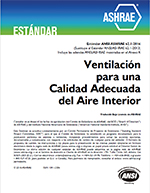Description
Window solar gain can strongly influence building energy consumption, peak loads, and comfort. Shading devices are routinely used to control solar gain. The use of venetian blinds is particularly common. There is a strong need for models that can accurately simulate this type of device. As a first step, this study deals with the mechanisms of longwave radiant exchange. Methods are presented by which spatially averaged optical properties (referred to as “effective†optical properties) can be calculated. An enclosure model was formulated to model the interaction of radiation with the slat surfaces. Six enclosure areas, rather than four, were used to account for the possible overlap of blind slats. This optical model allows the venetian blind to be treated as a planar, homogeneous ”black-box” layer in a series of glazing layers and, coupled with the appropriate convection model, can be incorporated within a standard one-dimensional center-glass heat transfer analysis. Sample calculations were performed and the resulting effective optical properties discussed. The model compares favorably with expected trends and limits. The effect of slat curvature was also examined.
Units: Dual
Citation: Symposium Papers, Anaheim, CA, 2004
Product Details
- Published:
- 2004
- Number of Pages:
- 11
- File Size:
- 1 file , 900 KB
- Product Code(s):
- D-21856




